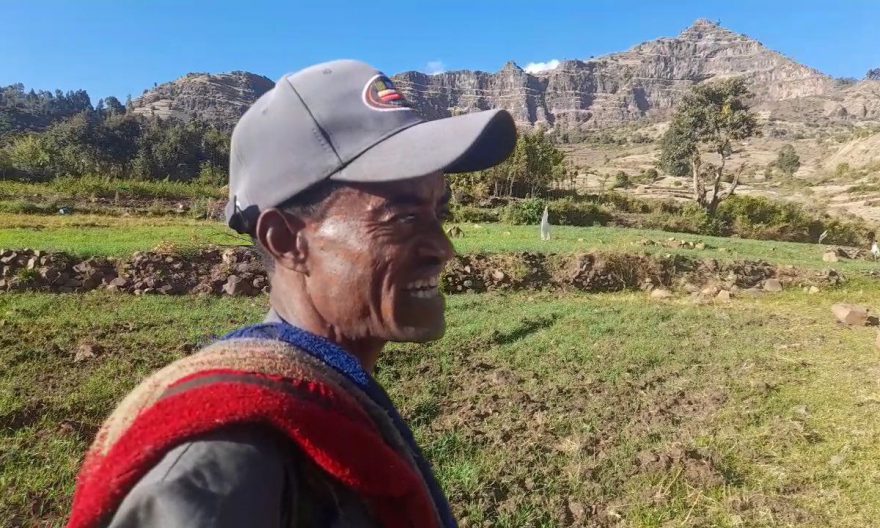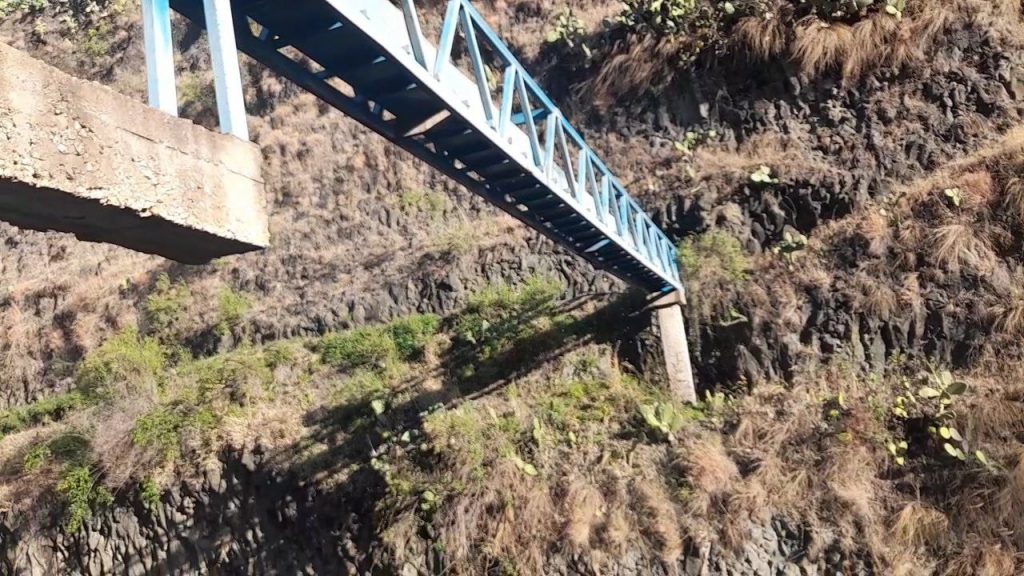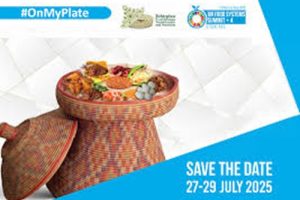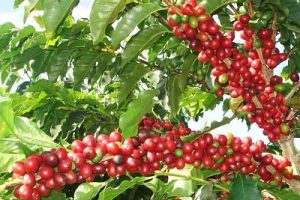
BY WORKU BELACHEW
Farmers at Hagere Mariam Wereda, North Showa zone of Amhara state, are filled with hope and optimism after engaging in a new farming scheme that could possibly raise their income. Smallholders at the place had never thought of using the existing small-scale gravity-fed irrigation infrastructure to produce crop in the summertime. Their plots are now covered by vegetating irrigated-wheat farm.
Agricultural experts summoned farmers from every district earlier this year and advised them to cultivate wheat using irrigation. For most farmers producing wheat in the summertime was just a “joke”.
To state the least, the majority of farmers in and around the area, except the youths, perceived the scheme, irrigated-wheat production, as a bizarre one, if not a wastage of time, labor and money. The problem did not only end there, the scheme had also been considered a menace that potentially dwindle the income that was being generated by selling vegetables they produce using irrigation.
The youths have, however, opted for taking risks no matter what. It’s not the first time for the youths of the area to try what had first appeared impossible. The first one turned out to be a success story. And the second one has started to flicker hopes among them.

Over 35 smallholders in the vicinity called Kure and its surrounding area have received select seed and fertilizer from the Wereda and have started farming activities irrigating their land using a nearby River—one of the tributaries of Kessem River.
Almost all farmers are excited about the wheat that is at a vegetative stage now. They still raise two questions. Will the wheatgrass yield seeds at this summertime? If so, how should we stop birds and primates from inflicting damage on our crops?
“We, of course, heard about summer wheat production but we had never imagined practicing it here,” Demissew Engdawork, 36, a father of five said. After a series of consultations and the ensuing encouragement of the Wereda agricultural experts and officials, all the 35 smallholders, agreed to try the new scheme delineating some plots of land for the new scheme.
“It takes us more than an hour to get our fresh produce to the nearby marketplace, Shola Gebeya, through the difficult terrain. To be frank, the income we generate from the vegetable produce is insignificant as compared to the labor we invest in it.” Yenechoh Michael (aka Kure) youths’ diverted water from the nearby river some six years ago.
Landslide poses the greatest difficulty to the people of the area. But the youths never shied away from finding a workable solution to it. They diverted the water from the side of a relatively stable land on the right side of the River. The youths’ farmland is, however, on the left side. Hence, they should find a way to get the water to the left side. They used wooden pillars and steel sheets to construct a structure to make the water flow to their farms.
Still, there was a problem lingering around their activity. Flash floods during the winter season used to demolish the structure and they had to build a new one every year. The Wereda recognized their hard work and consulted Menschen für Menschen that was running various projects at the wereda and beyond. Eventually, they got a new concrete and steel structure that solved their problems for good.
“Our seniors thought it was impossible to divert the waters. We did it. And now they’re commenting that it is bizarre and impossible to grow wheat in the summertime. We’re some weeks away from witnessing the good result,” Demesew commented.
“We grow onion, tomato, and cabbage using irrigation …and now we’ve turned our heads towards summer wheat cultivation as well.” Demesew expects to obtain double benefits from the wheat production. He said he would earn a better income as a result of it. “If things go as planned, I may harvest up to 8 quintals.”
“Also, we get feed to our animals. We encounter a shortage of fodder during the rainy season as almost all land in our area is covered by crops.” Similarly, Mesfin Getaneh, development coordinator at Yenechoh area, sees a promising result from the irrigated-wheat farm. He said though they were engaging in vegetable production, the benefits they obtain are too dwarf.
“I applied two quintals of fertilizer and sow 75kgs of wheat. I expect to get at least 10 quintals of wheat.” To him, their toiling in building an irrigation canal back six years ago is to pay them in immense. “We have the land, though a small one, water and the determination. What was lacking had been the awareness of which crop to grow in our fields during the summertime. Now thanks to the agricultural experts and officials, we’ve started producing profitable crops.”
Mesfin went on saying that he and similar other farmers find it hard to get fodder to their cattle particularly in the wintertime. Now farmers engaging in the scheme can surely get reserve fodder to their animals.
Demesew and Mesfin, however, have cast doubts. During the winter time, all our lands are covered with crops. Everywhere one goes in these rural villages, they can get crop farms. People cooperate in preventing birds from destroying crops.
Now the greatest challenges ahead of them are primates and a flock of birds. As there is only their crop in the fields, the animals may inflict considerable damage to the wheat farm. “We’re ready to do everything at our disposal to prevent the animals from destroying our farms. We use all the traditional means to fight the menaces.”

In addition to offering training, the government supplies modern agricultural inputs such as water pumps, select seeds, fertilizer and others to make the scheme a success story. This and other interventions in the agricultural sector are sought to enhance food security and food self- sufficiency.
Ethiopia’s Ten years development plan (2020/21-2029/30) set objectives for the agricultural sector. Accordingly, the country aspires to increase “the total annual quantity of crop production in all production systems from 543 million quintals to 925 million quintals.” It also set a goal of increasing “crop production through irrigation from 8 million quintals to 38 million quintals.”
The mid-term report of the Ministry of Irrigation and lowlands shows that over the last six months of the current fiscal year, it has imported 48,000 water pumps to help farmers use irrigation from available waters in their surroundings.
Per the report, 29 irrigation infrastructure studies and design projects have been carried out. The Ministry is building 14 irrigation infrastructures. It has also followed up the study and designing of 15 existing irrigation infrastructures and sets to conduct a feasibility study of five new irrigation infrastructure.
Earlier in October, Prime Minister Abiy Ahmed (Ph.D) launched irrigated-wheat production for the current Ethiopia fiscal year. Per the plan, 1.3 million hectares of land would be developed.
The expectation of yield goes as big as 52 million quintals surpassing the preceding season’s harvest by over two-fold. Ethiopia has not only substituted wheat importation with local production, but it also sets to export to neighboring countries with an agreement already reached with Kenya. Also, Djibouti expressed a desire to import wheat from Ethiopia, according to ENA’s report back on October 25, 2022
THE ETHIOPIAN HERALD TUESDAY 7 FEBRUARY 2023





